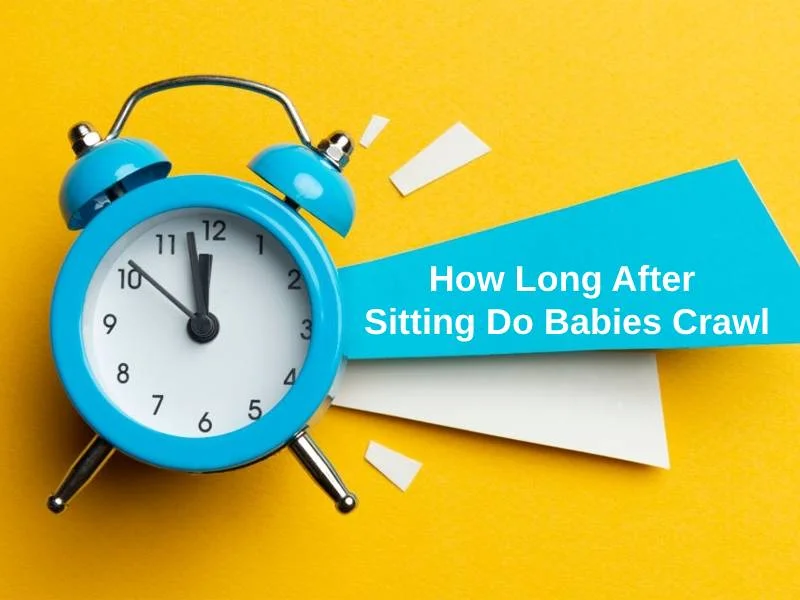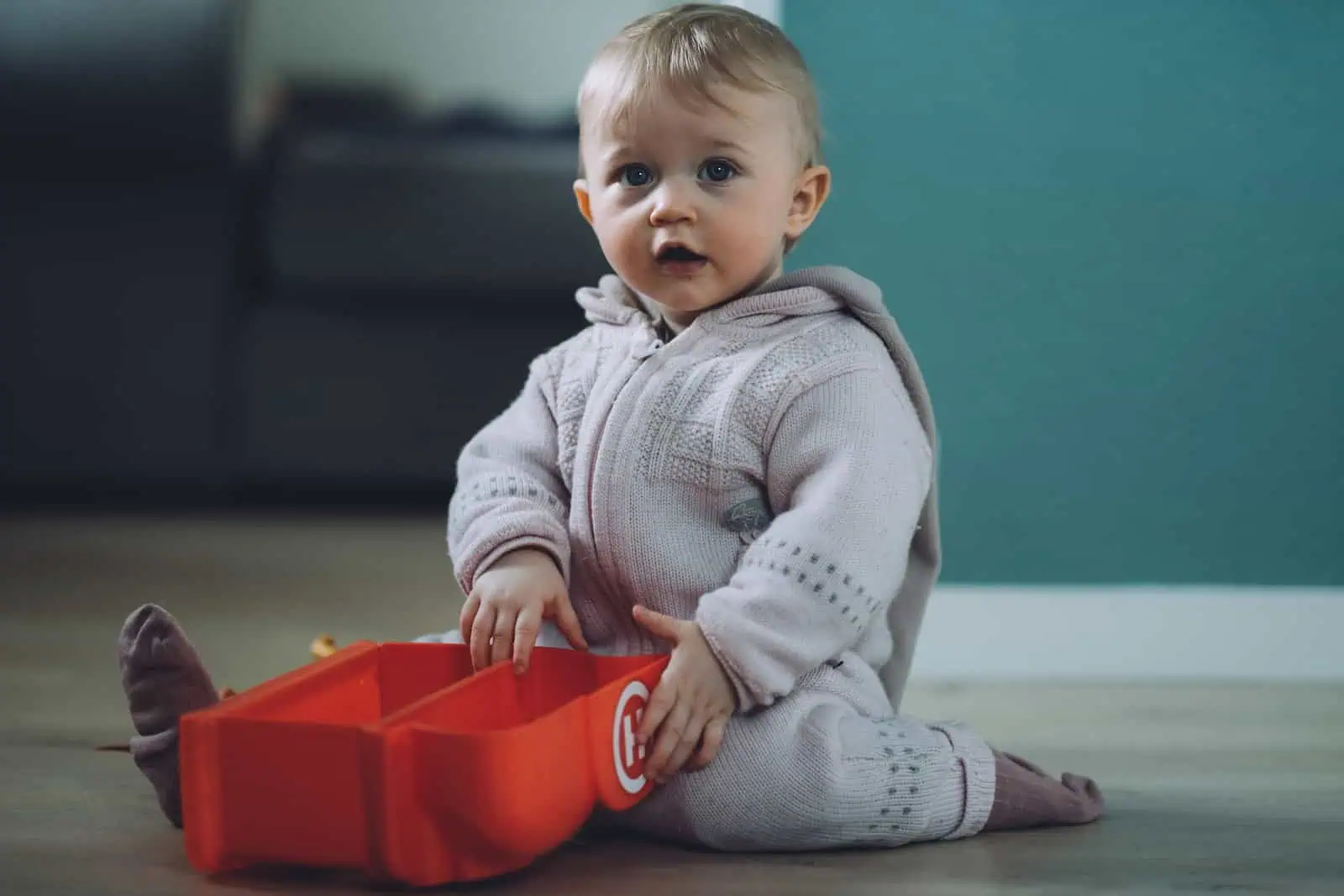Exact Answer: Approximately 3 months
Sitting and crawling are two very important milestones after birth in a baby’s development. Sitting exposes your baby to a completely new world, as it learns how to view its surroundings from a different perspective.
This can be exciting for both the parents and the baby, as it is documented through video footage and pictures.
Crawling is just as important as sitting, as it now teaches the baby how to move and take its first step, even on all fours. This can be fun for the baby, and it allows the baby to explore new settings around him, making playtime for fun.

How Long After Sitting Do Babies Crawl?
| Objective | Age of baby |
| Baby sits up | Approximately 6 months |
| Baby crawls | Approximately 9 months |
| Baby walks | Approximately 12 months |
Babies tend to learn how to sit up properly at around 6 months of age. To do this, they may need to master how to control their head properly. By effectively controlling their heads, they can easily move other parts of their body in a more purposeful and controlled manner.
Babies show many signs of being ready to sit upright. They push their bodies up while lying on their tummies. This position also allows the baby to learn how to roll over and practice this new move.
With a little help from the adults around, they can help hold the baby upright, so it can learn to stay up for short durations at first. In the beginning stages, you must always keep an eye out and support the head, along with the body of the baby. This is to avoid sudden and unpleasant falls. After a period of time, the baby will automatically know how to sit up without any help at all.
The next step is crawling which happens approximately 3 months after learning how to sit up. So, babies start creeping or crawling at 9 months of age. This soon leads to walking.

There are many types of crawls including the classic crawl, bottom scoot, rolling, bear crawl, crab crawl, combat crawl, and many more. Babies may do any of these depending on their preference and position at the time.
A huge indicator that your baby is going to start crawling is that they will be able to roll on both sides. In addition, the baby is confident enough to push itself up and prop itself into a sitting or crawling position.
Why Do Babies Take That Long To Crawl After Sitting?
It takes that amount of time to learn how to crawl after sitting because the baby has to adapt to each new movement it does. This is all new to them, and it can be quite scary to try out new things. So it takes a little time for infants to learn new skills, and gain the confidence to try out new things such as crawling and sitting.
In addition, the three months give the baby enough opportunities to practice whatever they’ve learned and hone this skill, so they can move on to new things. In this case, it allows the baby to master sitting upright and then learn and practice to crawl gradually.
It is important to give a lot of trial-and-error opportunities for your baby, but while they are supervised. This enables them to experiment and explore new bodily movements. In addition, it is better to allow your baby to play on the floor, with toys that are safe for them. You may even place pillows or place them between your legs, while you engage them in activities such as singing songs, or playing games, or reading books.

To encourage your infant to crawl, you can give it tummy time. They can be placed with their tummies on the ground. This allows the baby to gain strength, and develop the muscles in their torso, arms, and shoulders.
Also, you can try making a special place for your baby, that is absolutely safe to play and experiment in. This involves taking away all potentially harmful objects. Moreover, you can try tempting your baby with their favorite toy or object that catches their eye. This pushes the baby to try reaching out towards the toy, and it will automatically allow the baby to start moving towards the toy, potentially crawling soon.
Conclusion
In conclusion, babies start sitting around the six-month mark. In addition, babies begin crawling around the nine-month mark. Hence, it is safe to assume that babies start crawling approximately three months after they learn to sit up, with a little bit of help.
There are many types of crawls that your baby may learn and use.
These are two exciting steps that the baby takes in its journey to grow into a young adult.
After learning how to crawl, the baby slowly tries to take its first step, in order to learn how to walk. The baby may feel scared but invigorated while passing all these milestones in its growth.